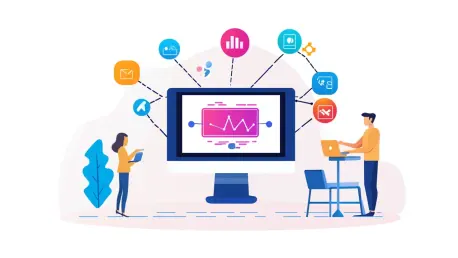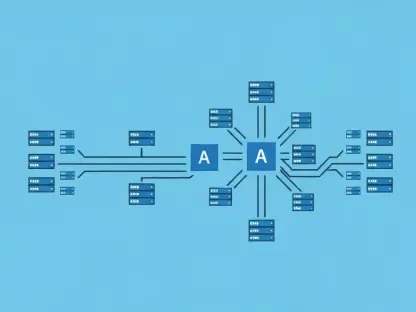Machine learning operations (MLops) have become a cornerstone for modern businesses aiming to leverage artificial intelligence (AI) and machine learning (ML) to maintain a competitive edge. Despite the promising potential of AI/ML, many organizations struggle to fully harness these technologies. Given the rapid technological advancements and increasing reliance on data-driven decisions, achieving MLops success is more crucial than ever. This article provides a comprehensive overview of current MLops trends and offers actionable strategies to achieve MLops success by 2025, ensuring businesses remain at the forefront of innovation.
The Importance of AI/ML in Modern Business
In today’s fast-paced technological landscape, AI and ML are critical for businesses to stay competitive. These technologies enable organizations to process vast amounts of data, automate decision-making, and uncover insights that drive innovation. Companies can now automate routine tasks, enhance predictive analytics, and provide personalized customer experiences. However, the full potential of AI/ML remains untapped for many companies due to various challenges that stem from a lack of understanding and integration strategies.
The prominent role of AI/ML in modern operations underscores the necessity of grasping their distinct characteristics. Generative AI models, for instance, differ significantly from traditional ML models in terms of development, deployment, and operational requirements. This understanding is essential for organizations to successfully integrate and manage AI/ML within their operations. Properly leveraging these differences can lead to more efficient workflows, cost savings, and enhanced model performance. Therefore, companies must invest in knowledge and resources to bridge the gap in understanding their AI/ML deployment and management.
Generative AI vs. Traditional ML Models
Generative AI models differ significantly from traditional ML models, mainly due to their capability to handle unstructured data such as text and images. This ability demands complex pipelines to process prompts and manage conversation history, which is not typically required for traditional ML models. These differences necessitate a rethinking of development and operational strategies. The intricacy involved in processing unstructured data translates to more sophisticated frameworks that can bring unparalleled benefits but also increased complexity in deployment.
Moreover, generative AI models incur higher operational expenses due to their complex calculations, greater latency, and demand for more computational power. The substantial resources required for these models mean that organizations must critically evaluate whether to deploy generative AI models or rely on standard models based on specific use cases and cost considerations. The decision largely hinges on the particular needs of the business, the nature of the data they possess, and the desired outcomes of the AI/ML models being implemented. Careful cost-benefit analysis and strategic planning are paramount in making these decisions.
Cost Implications and Optimization Techniques
A recurring theme in the discussion is the cost implications of adopting generative versus traditional models. Traditional models often make use of pre-trained architectures or lightweight training processes, which renders them more affordable and easier to deploy. This cost-efficiency can be a substantial advantage for organizations looking to implement AI/ML solutions without incurring prohibitive expenses. However, the true potential and value of generative AI should not be underestimated, particularly in scenarios requiring advanced capabilities such as natural language processing and image generation.
For generative AI, additional options like retrieval-augmented generation (RAG) allow for the incorporation of private data to enhance model outputs. These methods enable the utilization of internal data to provide more relevant and context-specific results, thereby improving performance. The decision between general-purpose models and task-specific models becomes crucial, as general-purpose models offer versatility but may sacrifice efficiency, while specialized models are tailored for specific applications. Balancing these factors is key to optimizing the deployment and performance of AI/ML models.
Monitoring and Metrics for Success
Model monitoring techniques differ significantly between generative AI and traditional ML models, reflecting the diverse nature of their applications and performance metrics. Traditional ML models use well-established metrics such as accuracy, precision, and F1 score, which are relatively straightforward to assess. These metrics provide a clear and concise way to evaluate the performance of ML models in handling structured data and solving specific tasks. However, this approach does not fully translate to the more complex and nuanced outputs of generative AI models.
In contrast, generative AI models often require metrics that hinge on more subjective measures like user engagement and relevance. Evaluating these models is intricate and may demand supplementary business metrics to gauge whether the model is performing as intended. Aligning model outcomes with overarching business goals, such as customer satisfaction and click-through rates, is vital for measuring success. Businesses need to develop nuanced and comprehensive approaches to monitoring that reflect the complex ecosystems in which these models operate.
Advancements in ML Engineering
Traditional ML has long benefited from open-source solutions, leveraging established architectures like LSTM and YOLO, and libraries such as XGBoost and Scikit-learn. These tools have become the industry standard, providing accessibility and versatility that make them widely adopted. Their proven effectiveness and adaptability have facilitated broad application across various industries, helping to standardize the deployment and development processes in ML.
Conversely, in the realm of generative AI, commercial solutions like OpenAI’s GPT models and Google’s Gemini have become prevalent. These commercial models offer cutting-edge performance but often come with higher costs and licensing requirements. Nevertheless, the landscape is evolving, with open-source alternatives like Llama and Stable Diffusion emerging. These open-source models are narrowing the performance gap, offering more affordable options for organizations willing to fine-tune or train these models using proprietary data. This shift towards open-source solutions democratizes access to powerful generative AI models, allowing more businesses to integrate advanced AI capabilities.
Integration of Internal Data and Scalability
A key trend in MLops is the seamless integration of internal data using retrieval-augmented generation techniques. This approach enables businesses to leverage their proprietary data, enriching the context of generative models and ensuring outputs that are highly relevant and accurate. By incorporating internal data, generative models can deliver responses that are tailored to the specific knowledge and requirements of the organization, adding significant value to their applications.
Efficient scalability and high-performance ML systems necessitate meticulous planning of components such as embeddings, prompts, and vector stores. This involves designing architectures that can handle large-scale data processing and model deployment across diverse environments. Fine-tuning models to cater to specific languages, geographies, or use cases ensures customized performance, which is crucial for global enterprises with varied requirements. Scalability must be built into the system architecture from the outset to accommodate future growth and evolving business needs.
Architectural Considerations and A/B Testing
Architectural considerations are essential for creating scalable MLops systems. The practical implementation involves embedding and querying internal data to provide context-specific answers, optimizing outcomes through A/B testing across different building blocks. Businesses must plan for a modular and flexible architecture that can adapt to changing demands and integrate new technologies over time. This adaptability ensures that the system remains robust and relevant as the technological landscape evolves.
A/B testing is widely advocated to refine solutions, ensuring that models perform optimally across various scenarios. This iterative process allows organizations to test different configurations and approaches, identifying the most effective strategies for their specific needs. By continuously assessing and optimizing the performance of their AI/ML models, businesses can ensure they are achieving the best possible outcomes. This approach fosters an environment of continuous improvement and innovation, enabling businesses to remain competitive and responsive to market changes.
Human Feedback and Metrics Alignment
Human feedback remains a cornerstone in evaluating generative models, with human-in-the-loop systems playing a critical role in fine-tuning metrics and checking performance. Advanced generative AI tools can expedite or partly replace human reviewers, enhancing the efficiency of the feedback loop and ensuring that the models are producing accurate and relevant outputs. This symbiotic relationship between humans and AI facilitates more reliable and refined models.
Emphasizing the alignment of model outcomes with business goals ensures that AI/ML initiatives drive tangible, measurable results. Metrics such as customer satisfaction and click-through rates serve as indicators of real-world impact, providing a clear measure of success for AI/ML models. Businesses must develop robust mechanisms for collecting and analyzing this feedback, ensuring that their AI/ML initiatives are aligned with broader organizational objectives and delivering meaningful value.
Holistic Solutions and Integration
Machine learning operations (MLops) have become indispensable for modern businesses seeking to utilize artificial intelligence (AI) and machine learning (ML) to stay competitive. Despite their tremendous potential, many organizations find it challenging to fully exploit these technologies. In an era where rapid technological changes and data-driven decisions are the norm, mastering MLops is crucial for success. This article delves into the latest MLops trends and offers practical strategies to achieve MLops success by 2025. By following these guidelines, businesses can ensure they stay ahead in innovation and maintain their market edge. The focus on achieving MLops success is not just about implementing the latest tools but also about creating an integrated approach that aligns with organizational goals. This includes investing in the right talent, fostering a culture of continuous learning, and utilizing scalable MLops frameworks. By doing so, companies can maximize the benefits of AI/ML, driving both efficiency and innovation in their operations and remaining at the cutting edge of their respective industries.









